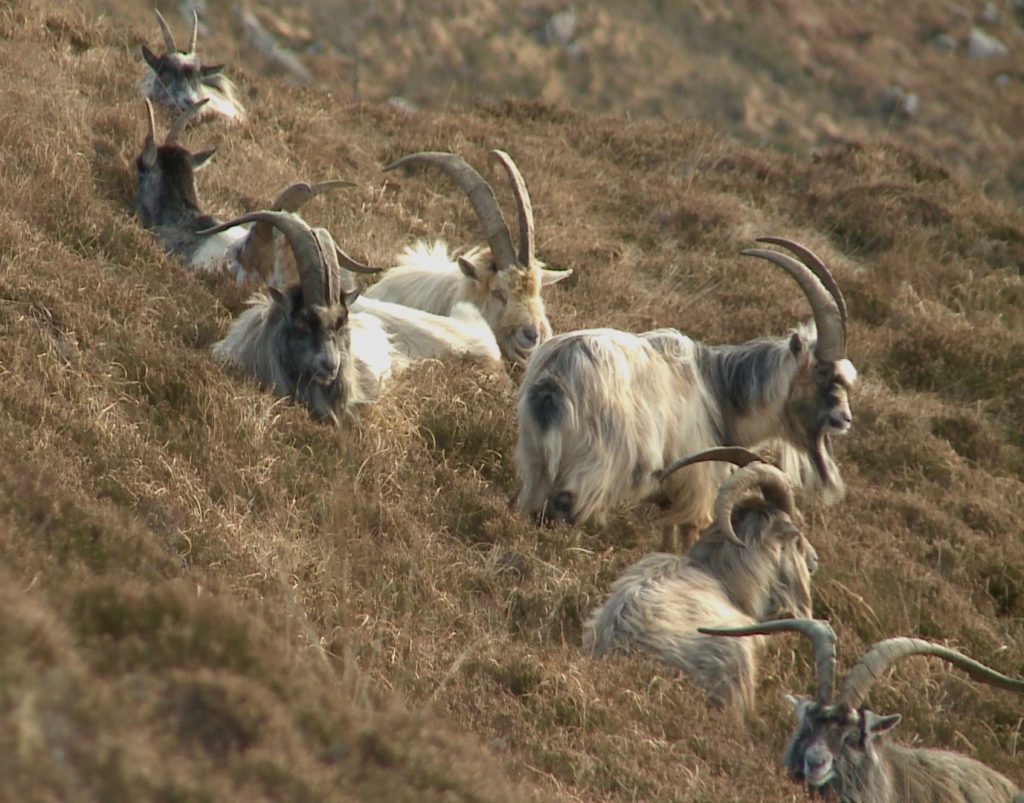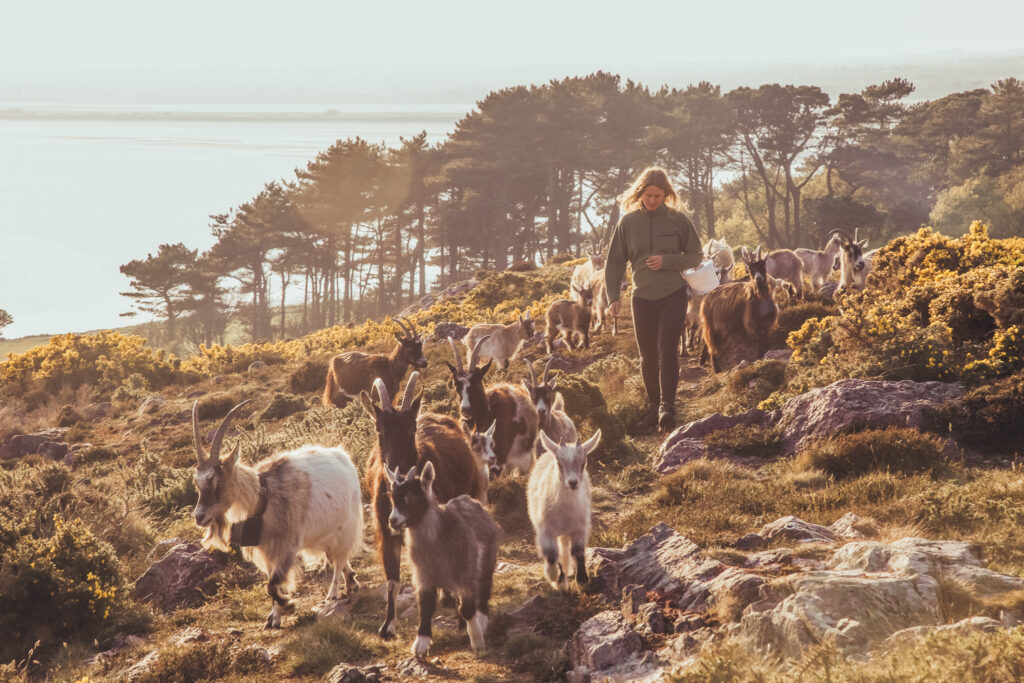Our Project
How it all began...
The Old Irish Goat Society was originally formed in the Burren, Co. Clare in 2006. Unfortunately despite significant volunteer-effort to save the Old Irish goats, the project struggled to gain the necessary supports to intervene.
In 2012, the Old Irish Goat Society re-formed in Mulranny Co. Mayo. This reactivation occured when goats thought to be Old Irish type were identified amongst the feral goat herd, on the mountains in Mulranny. Ray Werner, a primitive goat expert based in London, soon flew to the West of Ireland and joined the committee of volunteers. With him, Ray brought a vast knowledge on the primitive types physical characteristics, and behaviours. Together, we set about surveying the herds around Ireland, to see if any other Old Irish types could have survived and be saved.
It was likely Ray’s excitement and confidence on seeing the Mulranny goats that inspired the group to mobilise and find support for the first DNA analyses to see if the predicted genotype, supported the physical evidence that this was indeed Ireland’s ancient breed that was assumed lost. It was then – the task began in earnest, to pull this heritage breed back from the brink of extinction and to some how save the Old Irish goats!
Time to act
Inspired by the Precautionary Principle, we searched for a suitable site for the goats for almost a year. Once located, a breeding programme was finally established, and the foundation herd took up residence in our first Old Irish Goat sanctuary. ‘The Walled Garden’ in Westport Co. Mayo became the first safe haven for the breed.
In Spring 2013, the Society welcomed the first generation of Old Irish goat kids. For the first time in almost 100 years a small herd of Old Irish Goats were returning to the kinder circumstance of their ancestors, now cared for and loved once again by human handlers.

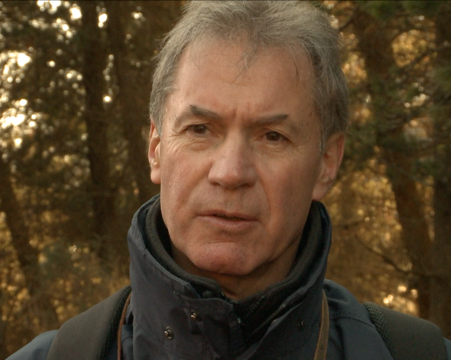
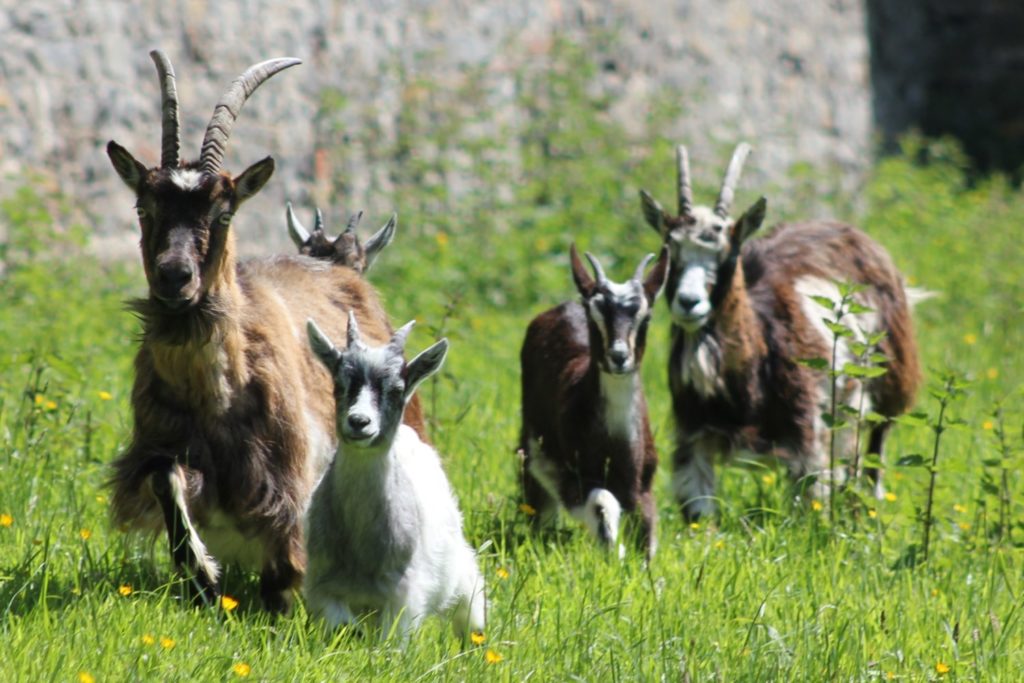
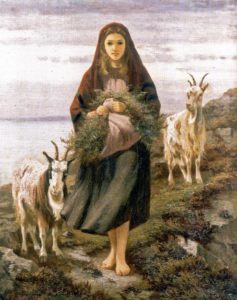
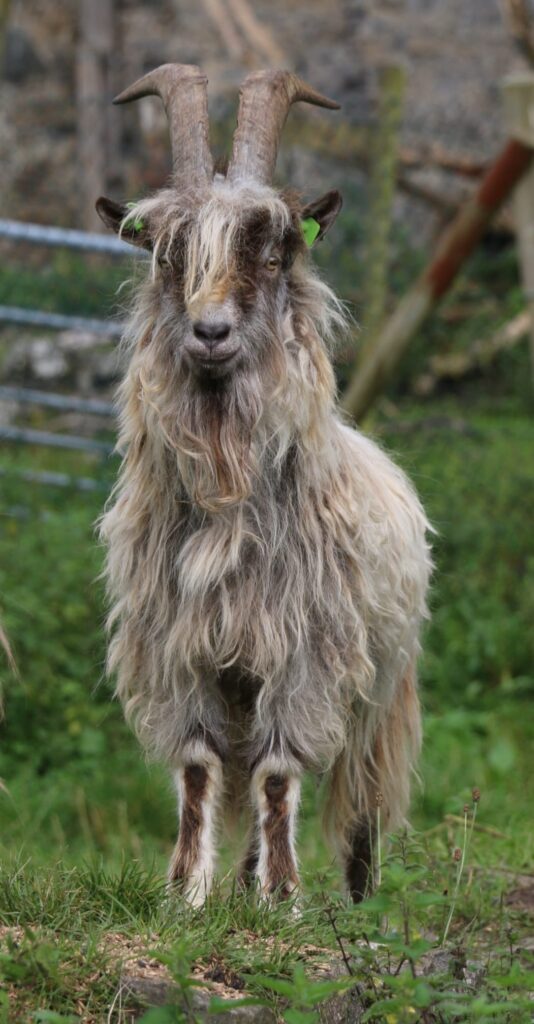
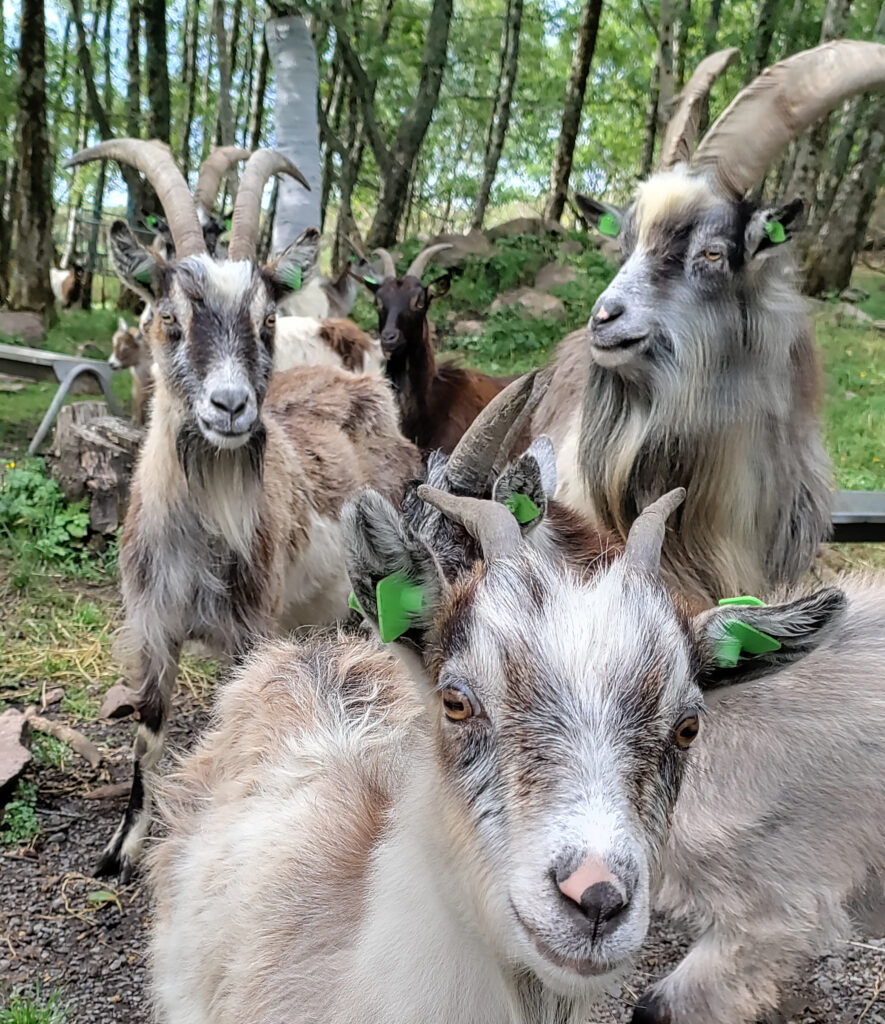
Saving the Old Irish Goat
That same year the Society commenced a 3 year research project. This involved collating historical evidence of the Old Irish Goat; from art, literature and reference books. DNA samples were collected from the Mulranny & Burren herds and sent for laboratory analysis. Critically important to this project, was the task of compiling historic DNA samples from the Dead Zoos of the UK and Ireland, as well as from taxidermy specimens from private collections.
The first comparative study was conducted by the Smurfit Institute of Genetics, in Trinity College. The much anticipated results arrived back in winter 2017, the conclusion of that research confirmed what we had long-hoped it would – that Ireland’s only indigenous goat had indeed been found! Although this news came with much relief to our volunteers, the task to Save the Old Irish Goats, had now never been more important!
The proof is in the DNA..
The Old Irish Goat Society contributed to the ADAPT Map Project, a global study conducted by the International Goat Genome Consortium. The DNA samples from our research, were added to the 119 different breeds gathered, and added to the database of genome sequences from global goat populations.
Their sequencing analysis further confirmed that the Old Irish Goat is clearly differentiated from improved modern breeds. Further genetic studies by Weatherbys Scientific, and geneticist Professor Hans Lenstra from Utrecht University reaffirmed that the Old Irish goat was a unique breed. When all the research verified its existence, it finally enabled us to define the breed standard and commence the process for Irish Native Rare Breed status.
The Santuary 2.0
In 2020 our herd was beginning to out-grow the Walled Garden, and so after finding an idyllic location locally, we moved our herd and breeding programme back home to Mulranny, to take up residence in the Old Irish Goat Sanctuary where they live today.
Irish Native Rare Breed
In June 2022, the Old Irish Goat was finally recognised as a Irish Native Rare Breed with an “at risk” designation owing to its critically low numbers. It was a process that had taken over two and half years work by our unstoppable volunteers. It is an achievement only two other native breeds had reached in the 17 years previous!
It was a huge achievement for the goats to be recognised finally. Sadly the fact this title would not offer any protection to the herds in the wild meant the celebrations would be short and swift. A lot done… more to do!
Protecting the Herds living in the wild
For over a decade we have travelled the country to try and protect the destruction of the feral herds living wild on the hills and valleys of this island. Sometimes with success , but more often than not the efficacy of our intervention would only be short-term. Many beautiful herds have been lost. In 2022 it is still legal to hunt and cull these beautiful majestic animals. It is still an area that remains unregulated, no hunting license is required, no quotas exist. It is an area we are heavily involved in trying to rectify. Our promise remains the same. We have commited and remain dedicated to the task to Save the Old Irish Goat. It’s a promise we intend on keeping.
The Future for the Old Irish Goat...
One of our most pressing conservation goals we have after pulling them back from the brink. Is to secure the future of the Old Irish Goats. Through our years of close-interaction with these animals ,one role stuck out from all the others. It is a job they are designed for, and perfectly adapted to doing – Conservation Grazing.
Today we pair this ancient animal and ancient mechanism for land-management with modern technology by utilising a virtual paddock system to manage the herd and strategically target grazing sites. This ancient almost forgotten breed, has re-emerged in 2022 and their purpose and functionality to help us prevent wildfires, tackle invasive-species and increase biodiversity can no longer be ignored!
As for the goats living in the wild, watch this space…
Please Sign the Petition to Save the Old Irish Goat here
